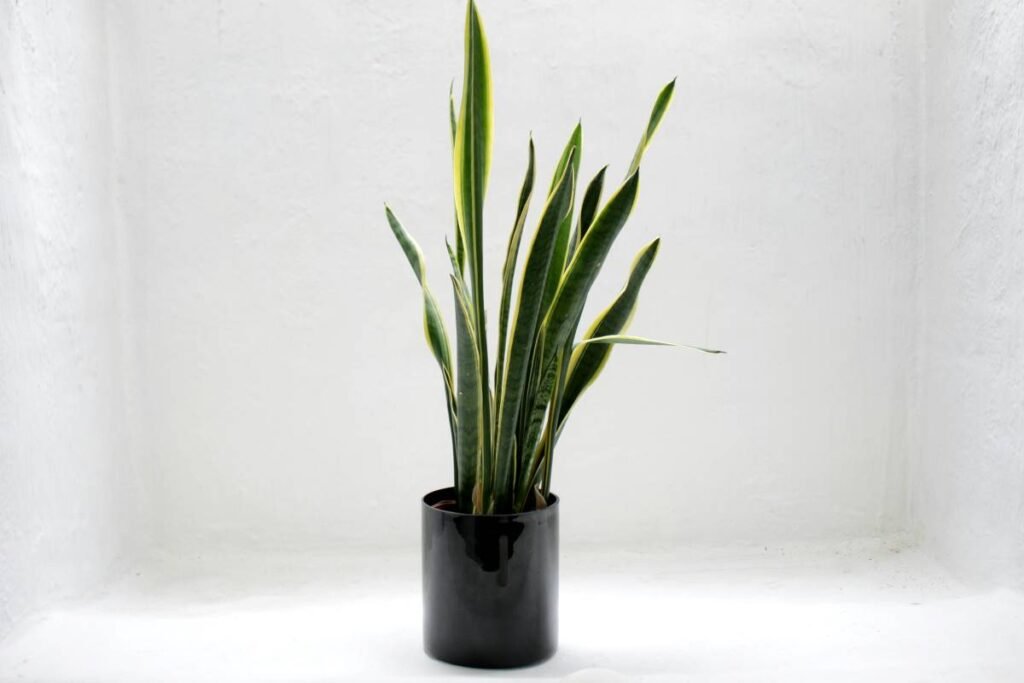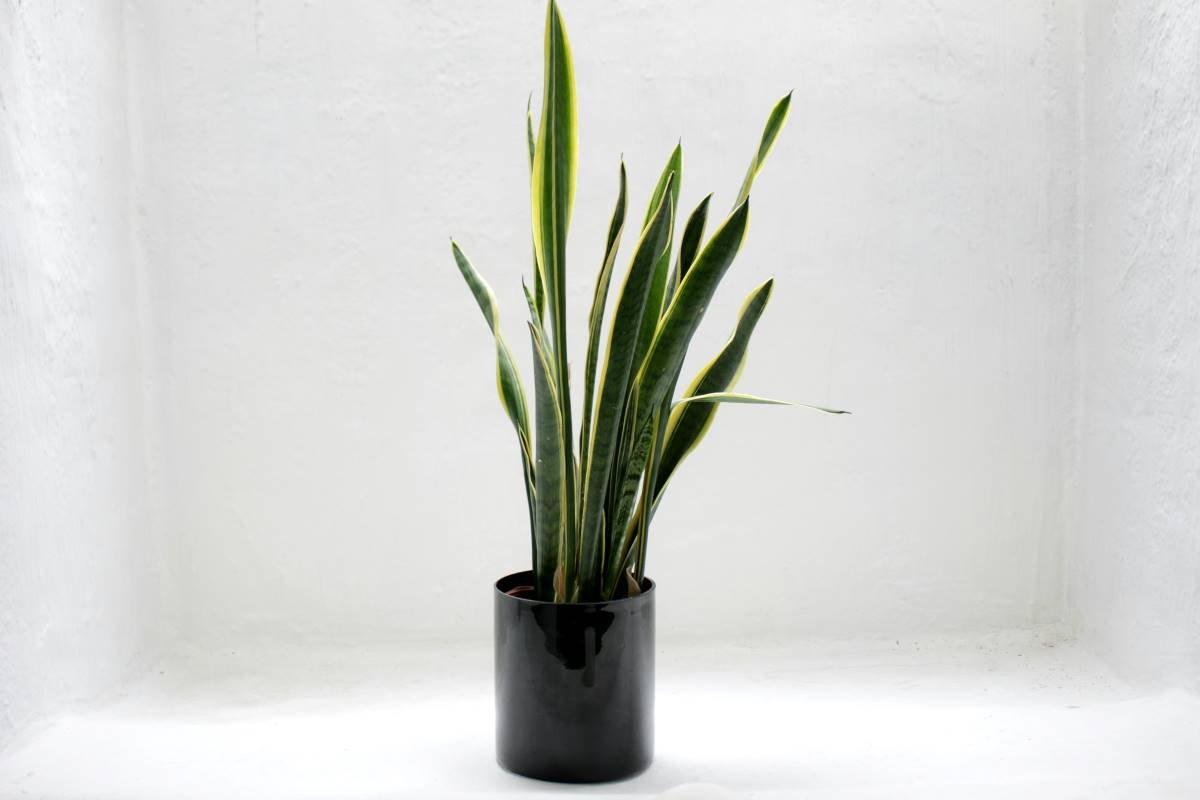The world of houseplants is filled with beauty, functionality, and a touch of magic. Among all the plants that people bring into their homes, the snake plant (scientifically known as Sansevieria trifasciata and now classified under the genus Dracaena) has become particularly famous for its resilience, air-purifying qualities, and striking appearance.
But one question frequently pops up when it comes to bedroom decor: Is it OK to sleep with a snake plant?
The short answer is: Yes, absolutely! In fact, not only is it “OK,” but there are several compelling reasons why sleeping with a snake plant might be one of the best decisions for your health, your sleep quality, and your overall well-being.
This blog post explores the science, folklore, health benefits, and potential considerations for having a snake plant in your bedroom. We’ll delve into everything you need to know to make an informed choice about this popular, fuss-free houseplant.

Table of Contents
What Is a Snake Plant?
Before diving into the “can” and “should,” let’s get to know this plant a little better. The snake plant, also humorously referred to as Mother-in-Law’s Tongue (due to its sharp, pointed leaves), is a succulent plant native to West Africa.
Its stiff, upright leaves often feature green and yellow patterns that resemble snakeskin, giving the plant its common name.
The snake plant belongs to the Asparagaceae family and is famously hardy, capable of withstanding drought, low light, and neglect.
It’s a staple in many homes and offices because of its minimal care requirements and aesthetic appeal. But beyond its good looks and hardiness, the snake plant has a fascinating set of features that make it an excellent candidate for bedroom living.
Key Characteristics of Snake Plants:
- Height: They can range from a few inches to several feet tall.
- Color: Typically green leaves with variegated yellow or silvery stripes.
- Growth Habit: Upright, forming clumps of tall, spear-like foliage.
- Maintenance: Requires infrequent watering and can thrive in low light.
- Lifespan: Long-lived, with some plants surviving decades.
The Science Behind Snake Plants and Air Quality
One of the primary reasons people are curious about sleeping with a snake plant is its reputation for improving air quality. This isn’t just folklore; it’s backed by science.
NASA’s Clean Air Study
In 1989, NASA conducted its famous “Clean Air Study” to identify plants that can improve indoor air quality by removing toxins.
The snake plant emerged as one of the top performers in this study. It was found to filter out harmful substances such as:
- Benzene: Found in plastics, resins, and synthetic fibers.
- Formaldehyde: Common in cleaning products, tissues, and upholstery.
- Xylene: Present in paint thinners and solvents.
- Trichloroethylene: Used in industrial processes and found in adhesives.
Oxygen Production at Night
Most plants perform photosynthesis during the day, taking in carbon dioxide and releasing oxygen. At night, however, they typically switch to respiration, emitting carbon dioxide instead. The snake plant is different.
It follows a special type of photosynthesis called Crassulacean Acid Metabolism (CAM), which allows it to continue absorbing carbon dioxide and releasing oxygen at night.
This unique ability makes the snake plant an excellent choice for bedrooms, where increased oxygen levels can contribute to better sleep quality.
Benefits of Sleeping with a Snake Plant
Let’s explore the numerous benefits of sharing your sleeping space with a snake plant:
1. Improved Air Quality
As mentioned, snake plants are exceptional air purifiers. By removing harmful toxins and continuously releasing oxygen, they create a cleaner and healthier environment in your bedroom. Better air quality can lead to fewer allergies, less respiratory irritation, and overall improved well-being.
2. Better Sleep Quality
The extra oxygen produced by the snake plant at night can have a calming effect on your body and mind. Increased oxygen levels can lead to deeper, more restful sleep, reducing sleep disturbances and enhancing your overall sleep quality.
3. Low Maintenance
If you’re looking for a plant that doesn’t demand much attention, the snake plant is perfect. It thrives in low light, requires watering only once every 2-3 weeks, and can withstand fluctuations in temperature. This means you can enjoy its benefits without worrying about constant care.
4. Aesthetic Appeal
Snake plants bring a touch of nature and elegance to any bedroom. Their upright, sword-like leaves add height and visual interest, and their green hues create a calming, peaceful atmosphere. A thoughtfully placed snake plant can make your sleeping space feel more serene and inviting.
5. Reduces Allergens
Snake plants can help reduce allergens by trapping dust and other particles on their leaf surfaces. This can be particularly helpful if you suffer from dust allergies or asthma.
6. Boosts Mental Health
Studies have shown that having plants in your living space can reduce stress, anxiety, and depression. The presence of greenery promotes feelings of calmness and connection to nature, which can enhance your mental health and overall happiness.
Is There Any Risk in Sleeping with a Snake Plant?
While the benefits are numerous, it’s natural to wonder if there are any downsides to having a snake plant in your bedroom. Here are a few considerations:
1. Mild Toxicity to Pets and Children
Snake plants contain saponins, which can be mildly toxic to cats, dogs, and small children if ingested. If you have pets or toddlers who are prone to chewing on plants, it’s best to keep your snake plant out of their reach. Ingesting the plant can cause nausea, vomiting, and diarrhea.
2. Overwatering Risks
Snake plants are susceptible to root rot if they’re overwatered. Ensure you allow the soil to dry out completely between waterings. Using a well-draining pot and soil can help prevent this issue.
3. Sharp Leaves
The stiff, pointed leaves of the snake plant can sometimes be sharp, posing a minor hazard if they’re positioned too close to your sleeping area. Place the plant in a spot where it’s unlikely to poke or scratch you.
How to Care for a Snake Plant in Your Bedroom
To fully enjoy the benefits of sleeping with a snake plant, proper care is essential. Here are some tips to keep your snake plant healthy and thriving:
1. Lighting Requirements
- Ideal: Bright, indirect light.
- Tolerates: Low light conditions. This makes it perfect for bedrooms that don’t get a lot of sunlight.
2. Watering
- Frequency: Water every 2-3 weeks. Allow the soil to dry out between waterings.
- Tip: In winter, reduce watering to once a month.
3. Temperature and Humidity
- Ideal Temperature: 60°F to 80°F (15°C to 27°C).
- Humidity: Snake plants thrive in low to moderate humidity.
4. Soil and Pot
- Soil: Use a well-draining succulent or cactus mix.
- Pot: Choose a pot with drainage holes to prevent water from pooling at the bottom.
5. Cleaning
Dust can accumulate on the leaves, reducing the plant’s ability to purify the air. Wipe the leaves with a damp cloth once a month to keep them clean and healthy.
Feng Shui and the Snake Plant
Beyond science and health benefits, the snake plant holds a special place in the practice of Feng Shui. In Feng Shui, plants are believed to affect the energy flow in your home. The snake plant’s tall, upright leaves are said to promote protective energy and repel negative vibes.
Best Placement for Positive Energy
In the bedroom, placing a snake plant near the window or in a corner can help balance the energy, promote harmony, and create a sense of safety and security.
FAQs About Sleeping with a Snake Plant:
1. Can I keep a snake plant in my bedroom?
Yes, you can! A snake plant is perfect for bedrooms. It cleans the air and adds oxygen at night. This makes your room healthier and more relaxing.
2. Will a snake plant help me sleep better?
Absolutely! The extra oxygen it gives off at night can calm your mind. You may notice fewer sleep interruptions. Many people report feeling more rested when they have one in their room.
3. Is it hard to take care of a snake plant?
Not at all! Snake plants are very easy to care for. They don’t need much water or sunlight. Even if you forget to water them for weeks, they’ll still thrive.
4. Does a snake plant clean the air?
Yes, it does! Studies show that snake plants remove harmful chemicals from the air. These include benzene, formaldehyde, and xylene. Cleaner air means fewer allergies and less irritation.
5. Can a snake plant harm pets or kids?
It’s mildly toxic if eaten. If you have curious pets or toddlers, place the plant out of reach. Eating it might cause nausea or vomiting. But don’t worry—it’s not life-threatening.
6. How often should I water my snake plant?
Water it every 2-3 weeks. Let the soil dry completely between waterings. In winter, water it even less—just once a month is fine.
7. Where should I put my snake plant in the bedroom?
Place it near a window or in a corner. It works well in low light. For Feng Shui, putting it in a corner promotes positive energy and safety.
8. What if I overwater my snake plant?
Overwatering is bad for snake plants. Their roots can rot if they sit in wet soil. Use a pot with drainage holes. Also, make sure the soil dries out before watering again.
9. Does a snake plant look good in a bedroom?
Definitely! Its tall, upright leaves add style to any space. The green color creates a calming vibe. It’s both beautiful and functional.
10. Can a snake plant reduce stress?
Yes, it can! Having plants around boosts mental health. They lower stress and anxiety. A snake plant makes your bedroom feel peaceful and connected to nature.
11. Are snake plants safe for people with asthma?
They’re great for asthma sufferers! Snake plants trap dust and allergens on their leaves. Cleaner air helps reduce symptoms like coughing or wheezing.
12. Do snake plants grow fast?
No, they grow slowly. But this is good news! You won’t need to repot them often. Plus, their slow growth means less maintenance for you.
13. Can I keep a snake plant in low light?
Yes, you can. Snake plants tolerate low light very well. However, they prefer bright, indirect light if possible. Either way, they’ll stay healthy.
14. Should I clean my snake plant’s leaves?
Yes, cleaning helps. Dust can block the plant’s ability to purify the air. Wipe the leaves gently with a damp cloth once a month.
15. How long do snake plants live?
They live a long time—with proper care, decades! Some snake plants survive for 20 years or more. They’re truly a lifelong companion.
16. Why does my snake plant have yellow leaves?
Yellow leaves usually mean too much water. Check the soil—if it’s soggy, let it dry out. Adjust your watering schedule to prevent this issue.
17. Can I gift a snake plant to someone?
Of course! Snake plants make wonderful gifts. They’re low-maintenance and bring so many benefits. Your loved ones will appreciate the thoughtful gesture.
18. Are snake plants expensive?
Not really. They’re affordable and widely available. Plus, they’re easy to propagate. You can grow new plants from cuttings, which saves money.
19. Does a snake plant attract bugs?
Rarely. Healthy snake plants don’t attract pests. However, overwatering can lead to fungus gnats. Keep the soil dry to avoid this problem.
20. What makes snake plants special compared to other plants?
Snake plants release oxygen at night, unlike most plants. They’re also tough, stylish, and improve air quality. Few plants offer as many benefits as these do.
Final Verdict: Should You Sleep with a Snake Plant?
Sleeping with a snake plant is not only safe but also highly beneficial. With its air-purifying capabilities, oxygen-producing powers, low maintenance needs, and aesthetic appeal, the snake plant is an excellent addition to any bedroom.
As long as you keep it out of reach of pets and children, a snake plant can be a wonderful companion for your bedroom. Its ability to improve air quality, enhance sleep, and contribute to a serene atmosphere makes it one of the best houseplants you can choose.
By following basic care guidelines like avoiding overwatering, ensuring proper lighting, and keeping the leaves clean, you’ll enjoy a healthy and thriving plant that benefits your health and well-being for years to come. Whether you’re drawn to its scientific advantages, aesthetic beauty, or the positive energy it brings, the snake plant is a choice you won’t regret.
So go ahead and welcome this resilient, air-purifying marvel into your sleeping space. You’ll breathe easier, sleep better, and enjoy the peace of mind that comes from having a bit of nature close by. Happy planting!

